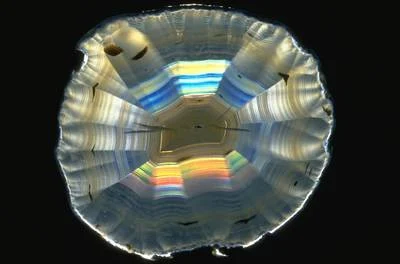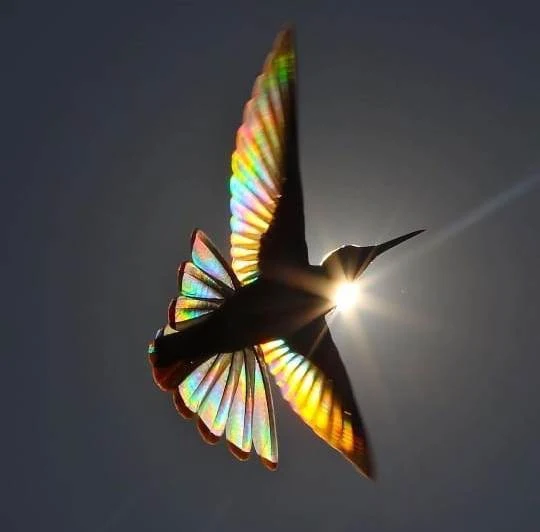Worldwide Gemological Laboratories Contact Information
Accredited Gem Appraisers
Address : 730 Sansom St., Philadelphia, PA-19106, USA.
Telephone : 215-873
Email : info@gemappraisers.com
Website : http://www.gemappraisers.com
AGT Gem Laboratory
Address : Tokyo:
5-15-14 Ueno, Taito-ku, Tokyo
Building 2F CY Okachimachi
Osaka:
Minamisenba 2-5-8, Chuo-ku, Osaka
Building community Nagahori
Telephone : Tokyo: (+81)03-3834-6586 / Osaka: (+81)06-6266-8601
Email : info@agt.jp
Website : http://www.agt.jp/ AGT Gem Laboratory is a website that provides services related to the inspection and grading of diamonds and other gemstones. They issue reports to ensure the safety of the jewelry industry and consumers. They also offer seminars to educate people about gemstones. The website includes information about their services, reports, seminars, and knowledge about gemstones. They have a membership program, and their contact information is available on the website. The website is easy to navigate, and the important information is presented clearly.
AIGS-Asian Institute of Gemological Sciences
Address : AIGS Laboratory, 919/1 Silmon Road, Jewelry Trade Center, 6th Floor, Bangrak, Bangkok 10500, Thailand.
Telephone : 662-267-4325, 662-267-4327
Email : info@aigslaboratory.com
Website : http://www.aigsthailand.com The AIGS website is all about gemology, which is the study of gemstones. They have a school where you can take courses to become a gemologist, and they also have a lab where they test and report on gemstones. The website has information about the school's courses, how to enroll, and frequently asked questions. They also have information about the lab's reports, how to become a VIP member, and overseas offices. The website has a gem dictionary and information about different types of gemstones. You can also read about the experiences of students who have attended the school. The website has contact information for their offices in Thailand, Japan, and China. Overall, the website is a great resource for anyone interested in gemology or looking to become a gemologist.
American Gemological Laboratories
Address: 580 Fifth Avenue #706, New York, NY 10036
Telephone: (212) 704-0727
Email: agl@aglgemlab.com
Website: http://www.aglgemlab.com/
American Gem Society Laboratories (AGSL)
Address : 8917 West Sahara Avenue, Las Vegas, Nevada 89117, US.
Telephone : (702) 233-6120
Email : agslab@lvcm.com
Website : http://www.agslab.com
AnchorCert -
Address : PO Box 151 Newhall Street, Birmingham, B3 1SB
Telephone : 0871 423 7922
Email : gem@theassayoffice.co.uk
Website : http://www.anchorcert.co.uk/
Bharrat Gem Testing Lab
Address : 42/16, Motilal street, T. Nagar, Chennai -17, Tamil Nadu.
Telephone : 24338725
Email : bgtl@scientist.com
Chandigarh Gem. Lab
Address : Booth No.4289, Sector 22-D, Chandigarh 160022, India.
Telephone : 0172-2726333, 9855080808, 9855133391
Email : cglindia@yahoo.com
CISGEM
Address : 30, Viale Achille Papa, Milano (MI), 20149, ITALY
Telephone : +39 02 8515 5250
Telephone (Labs): +39 02 8515 5324
Fax: +39 02 8515 5258
Email : [url]info.cisgem@mi.camcom.it[/url]
Website :http://www.cisgem.it
Diamond and Gem Laboratories of America
Address : 415 Sargon Way, Suite B, Horsham, PA-19044, USA.
Telephone : 215-443-7900
Email : datlas@dglaservices.com
Website : http://www.dglaservices.com
Emil Gem Laboratory
Address : 6th Floor ASIA GEMS TRADE CENTER BUILDING
242-250 MAHESAK ROAD, SURAWONGSE, BANGRAK
BANGKOK 10500, THAILAND
Telephone : 0-2234-8872, 0-2237-1928,
08-4772-5775 (Thai), 08-1912-8208 (English/Japanes)
Email : info@emil.co.th, micky@emil.co.th
Website : http://www.emil.co.th
EGL USA- European Gemological Laboratory-Los Angeles
Address : 550 South Hill, Suite 840, Los Angeles, CA 90013, USA.
Telephone : 877-893-8593, 213-534-2224
Email : egl@eglusa.com
Website : http://www.eglusa.com
EGL USA- European Gemological Laboratory-New York
Address : 6 west 48th Street, New York, NY 10036, USA.
Telephone : 212-730-7380, 212-842-5180
Email : egl@eglusa.com
Website : http://www.eglusa.com
E G Lab Emteem Gem Laboratory,
Address:24/4A, Al Fassy Mawatha Chinafort, Beruwala,Sri Lanka
Phone 0094 342279278
Email: mtmharis@sltnet.lk
Website: emteemgemlab.lk
European Gemological Laboratories-Mumbai
Address : 520, Parekh Market, 39,Kennedy Bridge, Mumbai-400004, Maharashtra, India.
Telephone : 022-65207186
Email : contact@eglindia.biz
Website : http://www.eglindia.biz
European Gemological Laboratory-Toronto
Address : 55 Queen Street E., Suite 500, Toronto, ON M5C 1 R6, Canada.
Telephone : 416-368-1200
Email : egl@eglusa.com
Website : http://www.eglusa.com
European Gemological Laboratory-Vancouver
Address : United Kingdom Building, 409 Granville Street, #456 Vancouver, BC V6C 1T2, Canada.
Telephone : 604-630-0464, 604-630-0465
Email : egl@eglusa.com
Website : http://www.eglusa.com
Gem Scan Laboratories
Address : 6A, Unity House, 2nd floor, Opera House, Opp to Panchratna building, Mumbai - 400004, Maharashtra, India.
Telephone : 022-23673612/84
Email : info@gslabsindia.com
Website : http://www.gslaboratories.com
Gem Scan Laboratories
Address : Prashanth Real Gold Tower, 9th Floor, North Usman Road, Chennai - 600017, Tamil Nadu, India.
Telephone :
Email : info@gslabsindia.com
Website : http://www.gslaboratories.com
Gem Scan Laboratories -Canada
Address : Gem Scan Laboratories Inc., 27 Queen Street E., Suite 406, Toronto, Ontario, Canada M5C 2M6.
Telephone : (416) 868-6656, 1-877-868-6656
Email : info@gemscan.com
Website : http://www.gemscan.com
Gemlab
Address : Laboratory for Gemstone analysis and reports, Mr. Thomas Hainschwang, Gewerbestrasse 3, FL-9496, Balzers, Principality of Liechtenstein.
Telephone : +423 262 2464, +423 373 2243
Email : laboratory@gemlab.net
Website : http://www.gemlab.net
Gemmological Institute of India
Address : 503, Sukh Sagar Building, N.S.Patkar Marg, Opera House, Mumbai-400007,Maharshtra, India.
Telephone : 022-66519030, 022-23612769
Email : gemforum@giionline.com
Website : http://www.giionline.com
Gemological Science International - India
Address : Gem Experience Pvt.Ltd., 4th Floor, Sangrajka House, Beside IndusInd Bank, Lamington Road, Opera House, Mumbai 400004.
Telephone : 022-67470099, 022-66101683
Email : india@gemscience.net
Website : http://www.gsiindia.net
Gems & Gemological Institute of Pakistan (GGIP)-Peshawar.
Address: Suite # 209, 1st Floor, Benevolent Fund Building, Sadder Road, Peshawar - Khyber Pakhtoonkhwa – Pakistan
Phone: (+92-91) 9213303, 9213196, 9213197
Fax: (+92-91) 9213198 , Email: ggipeshawar@yahoo.com
Website: http://www.ggip.com.pk/
German Gemmological Association (DgemG)
Address : Prof.-Schlossmacher-Str.1, D-55743 Idar-Oberstein, Germany.
Telephone : 49(0)6781/50840, 49(0)6781/508419
Email : info@dgemg.com
Website : http://www.dgemg.com
GHI India Pvt. Ltd.
Address : 5C, 5th Floor, Mehta Mahal, 15 Mathew Road, Opera House, Mumbai-400004,Maharashtra, India.
Telephone : 022-23610270, 022-23610271
Email : svabanya@yahoo.com,daryl0801@yahoo.co.uk
GIA- New York
Address : 580 5th Avenue, Suite 200, New York, New York-10036, USA.
Telephone : 800-366-8519, 212-944-5900, 212-575-3095
Email : labservice@gia.edu
Website : http://www.gia.edu
GIA-Carlsbad
Address : 5355 Armada Drive, Carlsbad, California-92008-4699, USA.
Telephone : 760-603-4500, 760-603-1814.
Email : labservice@gia.edu
Website : http://www.gia.edu
GIA-Thailand
Address : 10th Floor, U-Chu-Liang Building, 968 Rama IV Road, Bangkok-10500, Thailand.
Telephone : +66-2-632-4090, +66-2-632-4096
Email : info@giathai.net
Website : http://www.giathailand.com
Gemacyt Laboratorio Gemológico
Address : 15, Siena St. 1º C
28027 - Madrid - Spain
Telephone : 34 917 000 935
Fax : 34 913 194 000
Email : http://gemacyt-lab.com/contacto.php
Website : http://gemacyt-lab.com
Gemological Center “GEMEXIM” Ltd.
Address : Please supply
Telephone : +7 (495) 280 04 37, +7 (495) 280 04 38
Email : gemexim@yandex.ru
Website : http://www.gigia.ru
(GRS)Gemresearch Swiss Lab -Switzerland
Address : GRS Gemresearch Swiss Lab Ltd., P.O. Box 4028, 6002 Lucerne, Switzerland.
Telephone : 41 (41) 210-31-31, 41 (41) 210-31-34
Email : adolf@peretti.ch
Website : http://www.gemresearch.ch
GRS Gemresearch Swisslab -Thailand
Address : Jewelry Trade Center, Room 919/257, 20th Floor, North Tower, Silom Road, Bangrak 10500, Thailand.
Telephone : (66+2)237-5898, 630-0112
Email : adolf@peretti.ch
Website : http://www.gemresearch.ch
GRS Lanka (Pvt.) Ltd.
Address : Galle Road 471 2/1, Colombo -3, Srilanka.
Telephone : 94-11-2583326, 94-11-2582493
Email : adolf@peretti.ch
Website : http://www.gemresearch.ch
GS Gem Scan Laboratories Pvt. Ltd.
Address : 347, Panchratna, Opera House, Mumbai 400 004, Maharashtra, India.
Telephone : 022-23673612/13
Email : info@gslabsindia.com
Website : http://www.gemscan.com
Gübelin Gem Lab Ltd.
Address : Maihofstrasse 102, 6006 Lucerne, Switerland.
Telephone : (+ 41) 41-4291717, 41-4291734
Email : info@gubelingemlab.ch
Website : http://www.gubelinlab.com
Hanmi Gemological Institute Lab (HGI)
Address : 3F, 35-1 , Bongik-dong, Jongrlo-gu, Seoul, 11()-390, korea
Telephone : 02-3672- 2800~2
Email : hanmilab@hanmilab.co.kr
Website : http://hanmilab.co.kr/english/
HKD Diamond Laboratories (Canada)
Address : 21 Dundas Square, Suite 807, Toronto, Ontario Canada M5B 1B7.
Telephone : 416-368-7266, 416-368-8527
Email : info@hkdlab.com
Website : http://www.hkdlab.com
HKD Diamond Laboratories (Canada) Pvt. Ltd.-India
Address : 543, Panchratna Building, Opera House, Mumbai-400004, Maharashtra, India.
Telephone : 022-23683336/7
Email : info@hkdlab.com
Website : http://www.hkdlab.com
IGC Universal Gemological Laboratory (I) Pvt. Ltd.-India
Address : Sunville Bldg, Paper mill lane, Opp- Greens Restaurant, Lamington Road, Mumbai-400064, Mahrashtra, India.
Telephone : 022-23882535/7311
Email : india@igc-labs.com
Website : http://www.igc-gem.com
IGC- Universal Gemological Laboratories-Israel
Address : Diamond Exchange, Maccabi Building Suite 1956, 1 Jabotinsky St., Ramat Gan, Israel-52520.
Telephone : 97237514782, 97236132651
Email : igc@igc-labs.com
Website : http://www.igc-gem.com
IGC- Universal Gemological Laboratories-Rusia
Address : Smolnaya str, 12, office 250, Moscow , Russia-125493
Telephone : +7 495 4523376, +7 495 4522278
Email : igc-gem@mail.ru
Website : http://www.igc-gem.com
IGI- Belgium
Address : IGI Belgium - World Head Office, Schupstraat 1, 2018 Antwerp, Belgium.
Telephone : 32-3-231.68.45
Email : info@igiworldwide.com
Website : http://www.igiworldwide.com
International Diamond Laboratories-Dubai
Address : GOLD&DIAMOND PARK, Building 3, 1st Floor, Sheikh Zayed Road, Dubai, UAE.
Telephone : +971 4 3807999
Email : info@diamondlab.org
Website : http://www.diamondlab.org
IGI- India
Address : International Gemmological Institute (I) Pvt Ltd, 404, Mani Mahal, 11/21, Mathew Road, Opera House, Mumbai-400004, Mahrashtra, India.
Telephone : 022-23672550, 022- 23642861
Email : india@igiworldwide.com
Website : http://www.igiworldwide.com
IGI Istituto Gemmologico Italiano
Address : 1, Piazza San Sepolcro, Milano (MI), 20123 ITALY
Telephone : +39 02 805 049 92
Fax: +39 02 805 057 65
Email : [url]laboratorio@igi.it[/url]
Website : http://www.igi.it
Independent Gemological Laboratories- USA
Address : 21 West 38th Street, New York, NY 10018, USA.
Telephone : 212-382 0008, 212-382 0009
Email : customerservice@dia-lab.com
Website : http://www.dia-lab.com
Independent Gemological Laboratories-Mumbai
Address : 2B Jain Tower, 17 Mathew Road, Opera House, Mumbai-400004, Maharashtra, India.
Telephone : 022-56842533
Email : india@dia-lab.com
Website : http://www.dia-lab.com
Instituto Gemológico Español
Address : C/Alenza 1, 28003-Madrid, Spain.
Telephone : +34 914-414-300
Email : info@ige.org
Website : http://www.ige.org/
International Diamond Laboratories-Belgium
Address : Hoveniersstraat 27, 2018 Antwerp, Belgium.
Telephone : +32 3 232 62 08, +32 3 232 63 28
Email : antwerp@diamondlab.org
Website : http://www.diamondlab.org
International Diamond Laboratories-Dubai
Address : Jewellery & Gemplex, Building 3, 1st Floor, Sheikh Zayed Road, Jebel Ali, Dubai, UAE.
Telephone : +971 4 3688674, +971 4 3688675
Email : info@diamondlab.org
Website : http://www.diamondlab.org
International Gemological laboratories and Institute
Address : C-25, Veer Savarkar Marg, Lajpat Nagar II, New Delhi-110024.
Telephone : 011-29811824 011-46546225
Email : info@igli.in
Website : http://www.igli.in/
Lotus Gemology Co. Ltd.
Address : Silom 19 Building Suite 413, 4th Floor 45/1 Soi 19, Silom Rd
Bangkok, 10500, Thailand
Telephone : +66 (0)2 117 3616
Email : info@lotusgemology.com
Website : http://www.lotusgemology.com
MSU Gemological Center
Address : Gemological Center, Department of Geology, Moscow University Main Building, leninskie Gory, GSP-2, Moscow, Russia-119992.
Telephone : +7 095 939 4973, +7 095 932 8894
Email : gemology@geol.msu.ru
Website : http://www.gemology.ru
SSEF Swiss Gemmological Institute
Address : Falknerstrasse 9, CH-4001 Basel, Switzerland.
Telephone : +41 61 262 0640, +41 61 262 0641
Email : gemlab@ssef.ch
Website : http://www.ssef.ch
Stone Group Labs
Email : bear@stonegrouplabs.com
Website : http://www.stonegrouplabs.com/Welcome.html
Swedish Gem Lab
Email: info@gemlab.se
Website: https://gemlab.se/
The Gem and Jewelry Institute of Thailand
Address : Gemmological Research and Testing Building, Faculty of Science, Chulalongkorn University, Phayathai Road, Patumwan, Bangkok 10330, Thailand.
Telephone : (622)218-5470-4, 652-5252
Email : jewelry@git.or.th
Website : http://www.git.ot.th/eng/eng_index.htm
Zitco Gem Testing Lab
Address : Kolcutta, West Bengal.
Telephone : 09373314622
Email : zitco@gemtestlab.com
Website : http://www.zitco.com |








